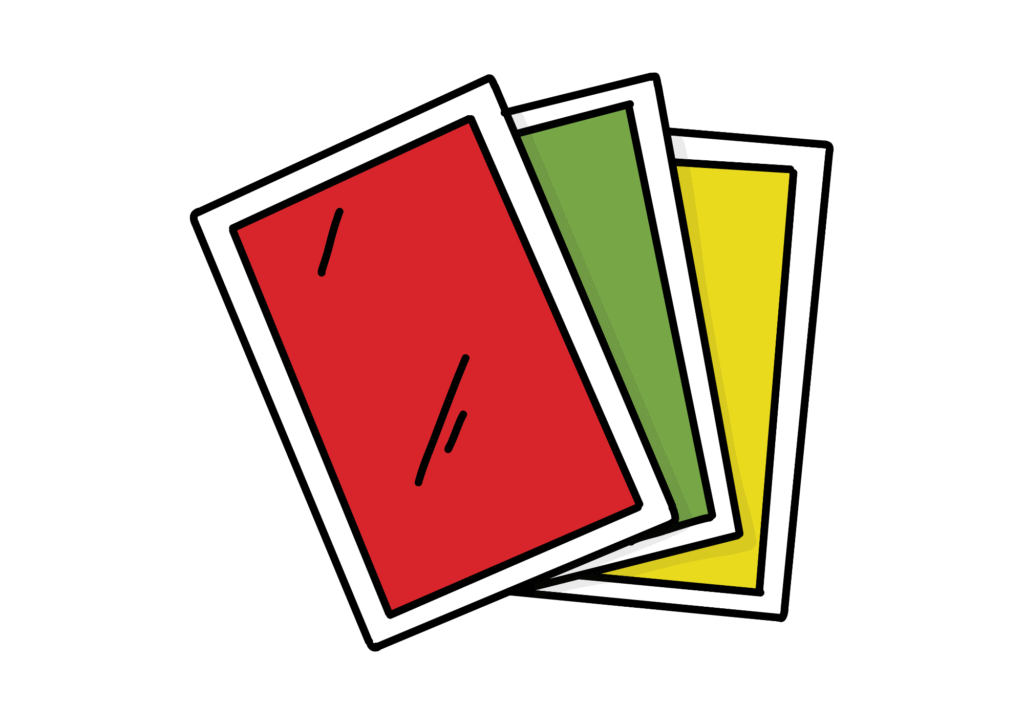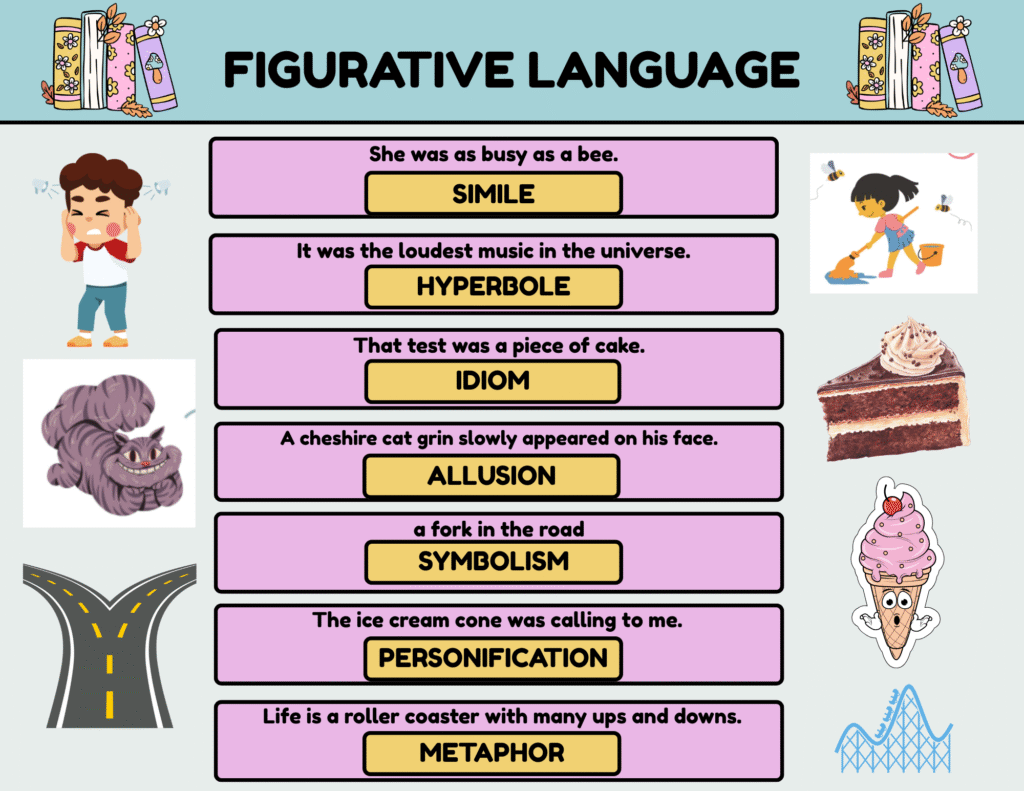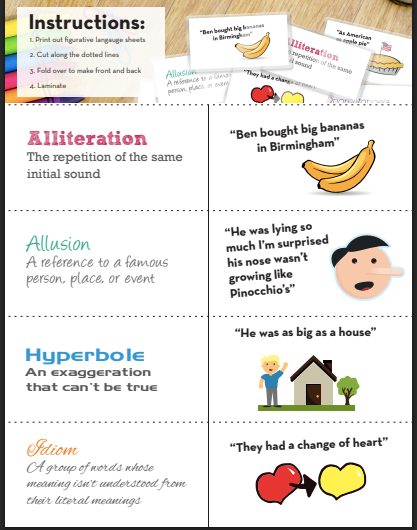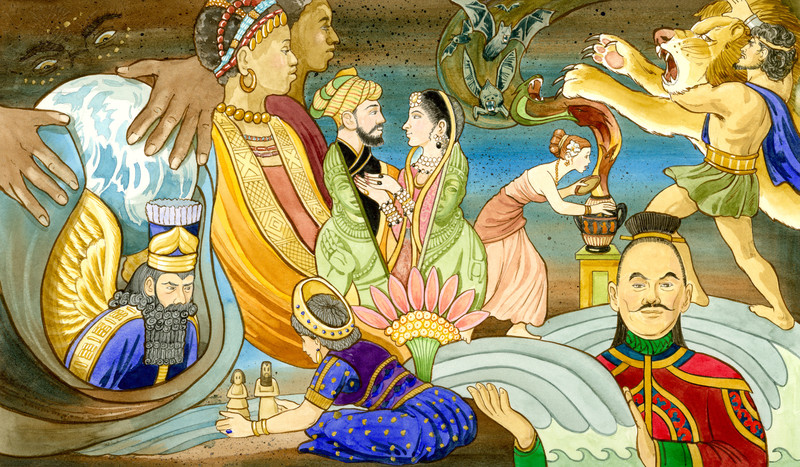Figurative language enables authors to turn plain sentences into vivid, emotional, and memorable descriptions. In this section, we’ll explore common types of figurative language, such as metaphor, simile, personification, hyperbole, idioms, symbolism, allusion, and imagery. Each element works together to add depth and color to both reading and writing.
Overviews and Tutorials
Imagery Video (with multiple choice questions)
Imagery Tutorial (with practice exercises)
Figurative Language Tutorial (with practice exercises)
Figurative Language Video (Khan Academy)
Figurative Language Video (with multiple choice questions)
Figurative Language Slideshow (with practice exercises)
Figurative Language and Mood Tutorial (in “The Legend of Sleepy Hollow“)
Symbolism and Allegory Tutorial (in “The Devil and Tom Walker”)
Practice Activities
Figurative Language Task Cards (grades 4 – 8) Includes short writing exercises.
Distinguishing Between Simile and Metaphor (video with multiple choice questions)
Figurative Language Review Cards
Figurative Language Task Cards Using Songs
Figurative Language Sorting Game (with short writing exercises)
More figurative language worksheets from Ereading Worksheets, Easy Teacher Worksheets, and K12 Reader.
Short Stories
This simple worksheet is structured to help readers identify, interpret, and evaluate figurative language and imagery in any text. Click File — Make a Copy to customize it for your homeschool. The following are some short stories to use with the worksheet:
A study of tall tales to see hyperbole illustrated.
(As an Amazon Associate I earn from qualifying purchases.)

Daily Warm-Ups:
Figurative Language
(daily exercises booklet)
Explore More: Visit other posts in this series.






